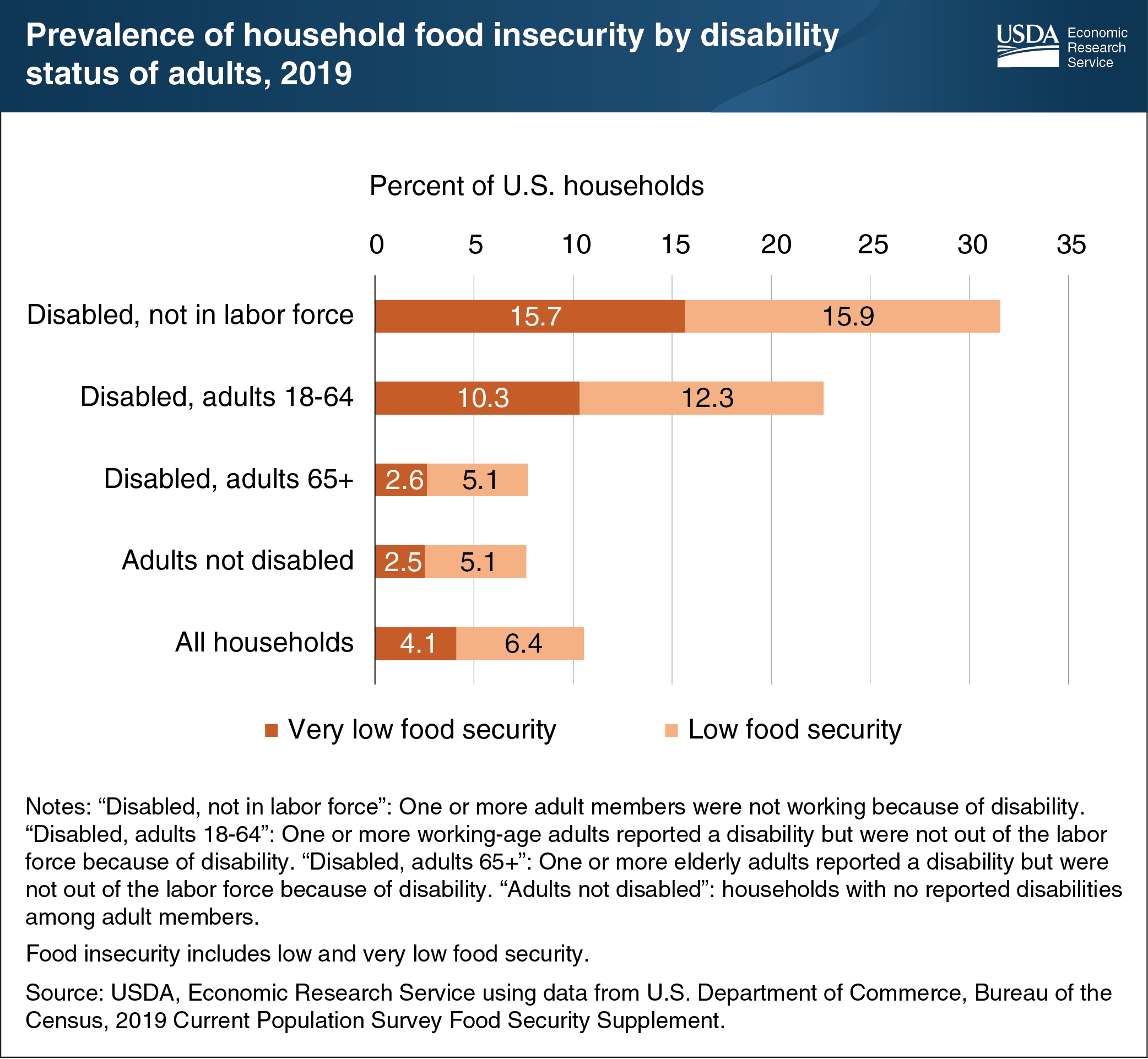Disabilities remain a strong risk factor for food insecurity
- by Alisha Coleman-Jensen
- 12/14/2020

The 1990 Americans with Disabilities Act was intended to provide opportunities to thrive for those with disabilities. But for some people with disabilities, barriers still exist to being able to afford adequate food. In 2019, 10.5 percent of all U.S. households were food insecure—that is, they struggled to put enough food on the table for all their household members. Adults who report being unable to work because of a disability have a high prevalence of food insecurity. Among U.S. households with an adult who was not in the labor force because of disability, 31.6 percent were food insecure in 2019. Among U.S. households that included an adult who reported a disability but was not out of the labor force due to a disability, 22.6 percent were food insecure. In contrast, 7.6 percent of households containing no adults with disabilities were food insecure in 2019. Households with adults out of the labor force because of disabilities were almost four times as likely to experience the more severe very low food security compared to U.S. households as a whole. Households with very low food security report cutting or skipping meals and not eating enough because there was not enough money for food. Households with low food security report avoiding substantial reductions or disruptions in food intake, in some cases by relying on a few basic foods. This chart appears in the Economic Research Service’s Amber Waves article, “Thirty Years After Enactment of the Americans with Disabilities Act, Disabilities Remain a Risk Factor for Food Insecurity,” December 2020.


